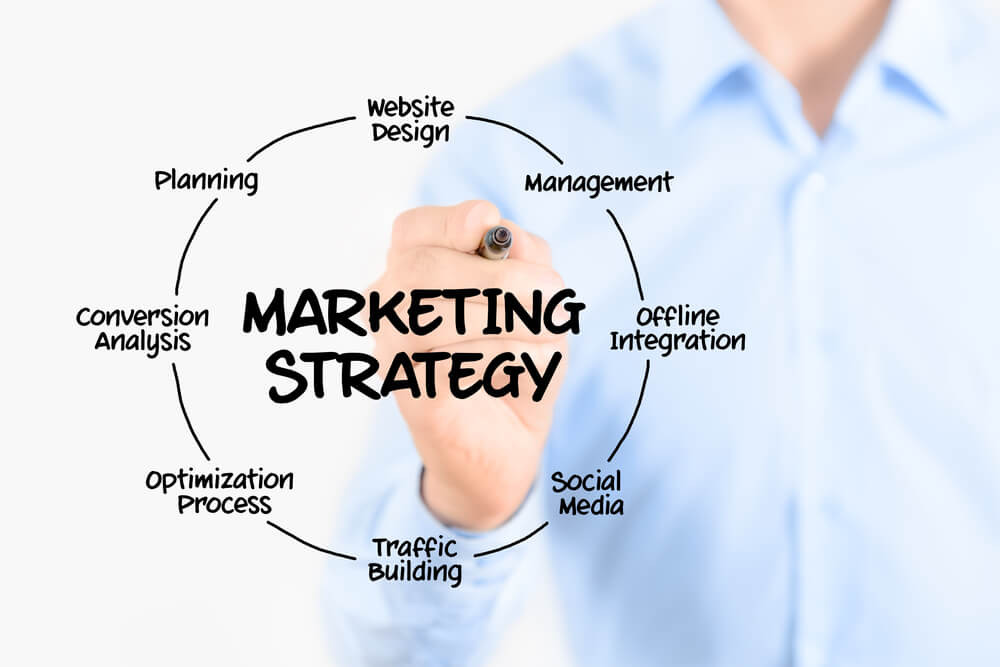
A Guide To Enterprise Software Development
On July 29, 2021 by Morthe StandardWhile 2020 was a gloomy year for the global economy, the IT industry also took a hit as a direct result of the global pandemic, with more than 5% decline, but the enterprise software market remained unfazed.
In the last decade, enterprise software has become the fastest growing sub-segment of the IT industry, with year-on-year market growth frequently surpassing 10 percent. And the market revenue has more than doubled between 2009 and 2019. However, this isn’t an isolated growth, as virtually every other segment of the IT services industry has experienced tremendous growth.
Despite the negative impact of the novel coronavirus, 2020 was a good year for the enterprise software industry because the pandemic lockdown pushed many businesses online. Which accelerated the demand for video and chat software, and was a major win for the enterprise software development sector.
According to a new market research report, global IT spending on enterprise software is expected to reach USD 599 billion in 2021, an impressive 13.2 percent increase from the previous year.
Table of Contents
What is Enterprise Software Development?
Enterprise software is an application or technology that caters to the needs of businesses. These applications have the sole purpose of streamlining business processes and driving efficiency in the workplace.
Enterprise software systems are usually designed to meet the specific needs of a particular organization, these applications are uniquely made to solve certain problems and eliminate hurdles that hamper productivity.
An enterprise application software can be a simple communication tool or a complex marketing software. Businesses differ greatly, and so do their problems. And the larger an organization, the more complex the systems tend to be, and the more important automation becomes.
Such large organizations require enterprise application software to seamlessly automate workflow, streamline processes, and facilitate secure and smooth data transfer within the organization.
While enterprise software development is solely based on the needs of a company and uniquely varies from business to business, the entire development process is loosely the same and comprises three distinct stages; design, development and deployment.
Enterprise Software Systems

There are many unique enterprise applications that facilitate workflow in the various sections of a business. For instance, there are enterprise software systems that automate and manage different business processes, both in manufacturing industries and retail businesses.
Some of these include tools used to manage supply chain, accounting, inventory, sales, and various business processes. While the need for enterprise software is more glaring in large organizations, small and medium businesses also need bespoke enterprise systems to manage sales, accounts, internal communications, customer relations, etc.
With enterprise software gaining new highs in market growth, many more enterprise software sub-segments are also seeing massive growth. And these three segments have been particularly interesting; Customer Relationship Management (CRM), Enterprise Resource Planning (ERP) and Business Intelligence (BI).
CRM Software to Reach USD 43 Billion in Sales in 2021
While businesses generally strive to increase their customer base, they spend more on retaining existing customers. With customer relationship management systems, businesses can track and analyze customer interactions, cultivate relationships with customers, and convert prospects to paying customers.
CRM system provides a wide range of strategies and techniques for managing customer support, organizing marketing and automating sales. The CRM market has been growing exponentially year after year, and it’s estimated to reach USD 96.5 billion by 2028.
ERP Market to Hit USD 97 Billion by 2024
Enterprise resource planning is a management software that enables businesses to seamlessly consolidate different business operations into a unified database. This software aids in data collection and analysis, and provides access to real-time data for insight into business performance.
The ERP integrates customer relations, human resource management, supply chain operations, accounting, and other essential aspects of businesses. The demand for the ERP software has been steadily on the rise and its market is poised to reach USD 97 billion in overall revenue by 2024.
BI Market Will Hit Usd 33.3 Billion by 2025
As businesses rely more on data-backed decisions, technology-driven processes for analyzing business data to provide actionable insights continue to gain popularity. Business intelligence, especially cloud-based BI technologies, have continued to attract positive attention and market growth is expected to reach USD 33.3 billion by 2025.
Useful links:
https://www.grandviewresearch.com/press-release/global-customer-relationship-management-crm-market
https://www.datasciencecentral.com/profiles/blogs/a-guide-to-enterprise-software-development
https://www.statista.com/statistics/203428/total-enterprise-software-revenue-forecast/
https://www.statista.com/statistics/268940/percent-growth-in-it-spending-worldwide-by-segment/
https://www.statista.com/statistics/605888/worldwide-enterprise-resource-planning-market-forecast/
https://radixweb.com/blog/top-enterprise-software-development-trends
https://ishtechnologies.com.au/enterprise-software-development/
https://unitedperfectum.com/news/7-enterprise-software-development-trends-to-look-out-for-in-2021/
https://www.laneways.agency/enterprise-software-development/
You may also like
Recent Posts
 Unleashing AI Power for Small Business Marketing Success
Unleashing AI Power for Small Business Marketing Success Pourquoi Choisir Une Structure En Acier Pour Vos Projets En Afrique ?
Pourquoi Choisir Une Structure En Acier Pour Vos Projets En Afrique ? Top IPTV France Providers: Finding the Best Service for You
Top IPTV France Providers: Finding the Best Service for You The Importance of Innovation Management in Business Success
The Importance of Innovation Management in Business Success How to Measure Lab Diamond Ring Size
How to Measure Lab Diamond Ring Size Web hosting plan: pro and cons of shared hosting and VPS hosting
Web hosting plan: pro and cons of shared hosting and VPS hosting White Sapphire vs. Diamond: The Ultimate Comparison
White Sapphire vs. Diamond: The Ultimate Comparison How Pawnbroking Works: A Step-by-Step Guide to Pawn Loans
How Pawnbroking Works: A Step-by-Step Guide to Pawn Loans GH Express LLC: Your Strategic Partner for Business Success in the U.S.
GH Express LLC: Your Strategic Partner for Business Success in the U.S.Novita Diamonds Shines a Light on Women’s Empowerment with Dress for Success Partnership
Buying Ethereum Down Under: Your Guide to Purchasing ETH in Australia
 Exploring the Brilliance of Lab-Grown Diamonds: Understanding the 4Cs
Exploring the Brilliance of Lab-Grown Diamonds: Understanding the 4Cs Lab Diamonds: The Top Choice for Ethical, Affordable, and Sustainable Brilliance
Lab Diamonds: The Top Choice for Ethical, Affordable, and Sustainable Brilliance SEO Backlink Services and Template Customization by a Pennsylvania SEO Expert
SEO Backlink Services and Template Customization by a Pennsylvania SEO Expert The Sparkle of Sustainability: Lab Grown Diamonds Adelaide
The Sparkle of Sustainability: Lab Grown Diamonds Adelaide
Popular Posts
 Leveraging User Forums and Communities: Online iPhone Selling
Leveraging User Forums and Communities: Online iPhone Selling Why You Should Be Adding Content to Google My Business
Why You Should Be Adding Content to Google My Business 360-Degree Digital Marketing Services: What’s included?
360-Degree Digital Marketing Services: What’s included? What are the Different Types of Marketing?
What are the Different Types of Marketing? 5 Tips for Sharing Files and Information Online
5 Tips for Sharing Files and Information Online 6 Major Factors To Consider Before You Hire Marketing Agencies Auckland
6 Major Factors To Consider Before You Hire Marketing Agencies Auckland First-Time Buyer’s Guide to Industrial Sewing Machines
First-Time Buyer’s Guide to Industrial Sewing Machines Benefits of Hiring a Full Time SEO Specialist
Benefits of Hiring a Full Time SEO Specialist Tips For Effective And Appealing Web Design
Tips For Effective And Appealing Web Design 3 Biggest Strategies That Can Help You Scale Up Your Company
3 Biggest Strategies That Can Help You Scale Up Your Company Using An SEO Consultant To Amp Up Your SEO Strategy During COVID-19
Using An SEO Consultant To Amp Up Your SEO Strategy During COVID-19- What Is The Essence Of Enterprise Resource Management Systems
How To Make Your Air Conditioning Business Ready For Google?
 Why Should You Add Comments To Your Blog?
Why Should You Add Comments To Your Blog?) 3 Reasons Why Forecasting Sales Is Important For Businesses
3 Reasons Why Forecasting Sales Is Important For Businesses
Most Viewed Posts
 API Integration Best Practices: Ensuring Secure and Scalable Solutions
API Integration Best Practices: Ensuring Secure and Scalable Solutions On The Whole Learning Elaborating Open Source API Tools
On The Whole Learning Elaborating Open Source API Tools Eliminate Annoyance By Fixing These Google Drive Problems
Eliminate Annoyance By Fixing These Google Drive Problems Reasons To Kick-Start Node JS Centric Product Development With Full-Swing
Reasons To Kick-Start Node JS Centric Product Development With Full-Swing Reasons Why It Is Important to Select the Best Online Education Platform for a Programming Assignment
Reasons Why It Is Important to Select the Best Online Education Platform for a Programming Assignment 6 Benefits of Using a Good Website Builder
6 Benefits of Using a Good Website Builder Techinques To Take Services For App Developers
Techinques To Take Services For App Developers- Four compelling reasons why the cloud makes it easy is the ideal IoT application
 A Guide To Hiring The Best Web Development Company
A Guide To Hiring The Best Web Development CompanyThe Best Tools For Mobile-First Indexing Strategy Development
